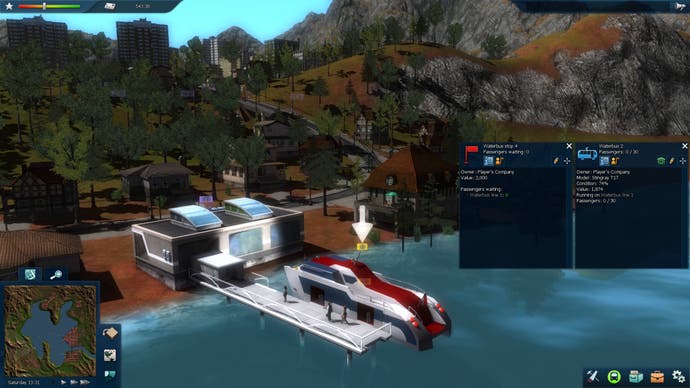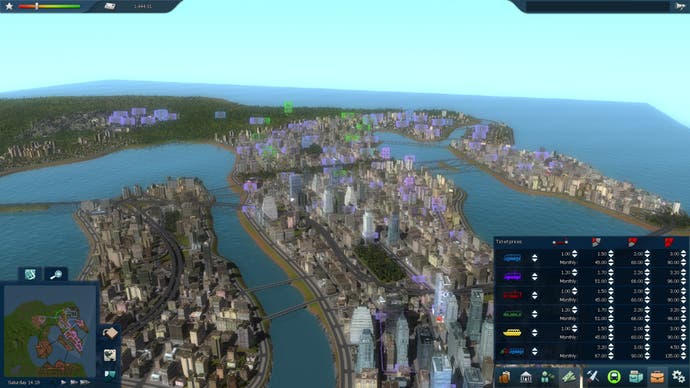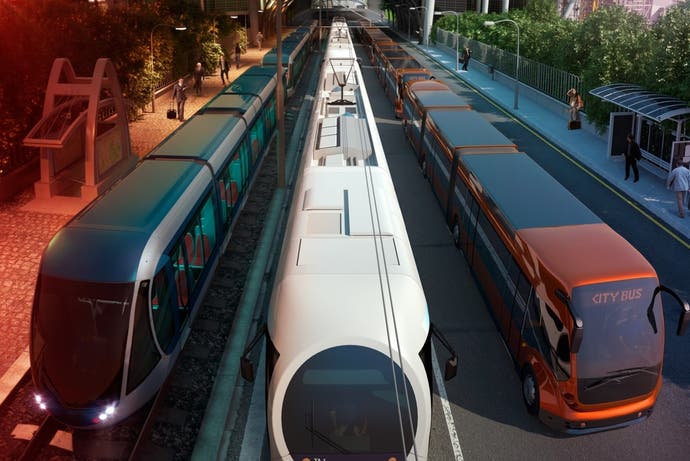Cities in Motion 2 preview: Making progress
It's alive!
Before I see Cities in Motion 2, Colossal Order's CEO has an unexpected disclosure for me and I'm really not ready for it. I have a friendly, throwaway question for Mariina Hallikainen about the transport management sequel and that question is: "What's your favourite form of public transport?" I honestly can't remember her answer because, before she gives it, she tells me she frequently gets ill when she travels. The woman behind Cities in Motion gets motion sickness.
I get a second surprise when the demo begins. At first I'm relaxed, even nostalgic, as the music brings it all back. I settle into my chair, hear that familiar funkiness once again and know exactly what to expect. We'll be weaving our way about the world's cities, carefully crafting a transport network to connect commuters, letting trams snake their way around Munich or Helsinki, sending buses bumbling about Vienna.
The music ends. The demo map appears. Then the game's lead designer takes hold of a bus depot and slams it down on top of somebody's house, dragging a road out of its mouth and trailing it through the suburbs. Screw you, house. You were in the way. In the way of progress.

The towns in Cities in Motion were pristine, untouchable, because it was a game about running a transport company only. But as designer Karoliina Korppoo explains, when the studio began to design a sequel, they wanted more. "The cities were too static," she says. "With this [sequel], you can really feel the cities change with the decisions you make."
This time, they're alive, responding to the transport networks that the player carves out in a way that Korppoo says was inspired by the PC classic Transport Tycoon. Neighbourhoods grow, property values rise and, as blue-collar workers take trams to the edge of town, a new industrial estate begins to develop. It all happens organically around the player, whose powers are limited only to laying roads or track, albeit with the occasional aid of a bulldozer when necessary.
Still, that infrastructure can be extraordinary. As Korppoo shows me another demo map, I point out a stunningly complex spaghetti junction formed of maybe a dozen intersecting roads and onramps that knot together or spiral above and below each other in the most complicated commuter capillaries you have ever seen. Yes, she says, I can build something like that if I want to, though it may take some practice. I can build big and I can build beautiful.

I can build very big, in fact. The sequel's maps are four times larger and the game is now powered by the Unity engine, which allows me to pan around at will and which does a fine job of showing off the new day and night cycle. That's not merely cosmetic either, Hallikainen adds, as commuters now have different transport needs at different times of day, something to be exploited: "During that morning rush, if I send a bus every ten minutes, I'm going to make so much more money." Should you wish, you can get into the business of timetabling your entire network.
I don't get nearly as much time with the game as I'd like, but I enjoy what I see. The presentation is impressive and, though I can only lay down roads or railways, my options for both are more varied than those I had in the SimCity beta. While the game may not be quite as pretty as EA's darling, it's certainly seems to be deep in its mechanics and its statistics. Hallikainen says that the team have also been working hard on data visualisation and stat tracking, with the aim of giving players the information they need at a glance, not forcing them to chase it through a maze of submenus.
At the moment, Cities in Motion 2 is set to come out sometime in the Spring and, thanks to coincidence, it's likely to come not long after the newly released SimCity. I hope it's a coincidence that doesn't harm it, because it looks like its shaping up to be quite a distinctive title in its own right.

